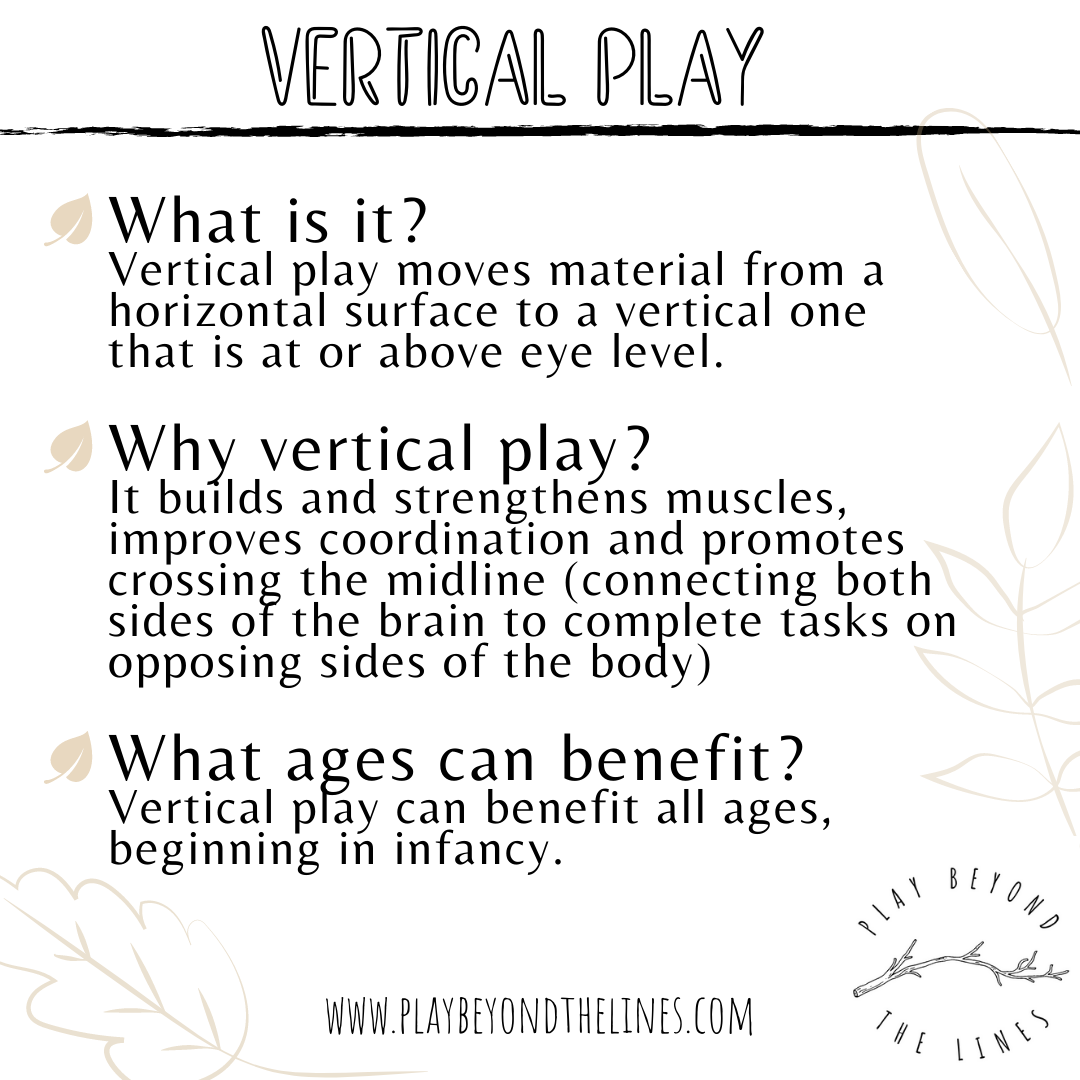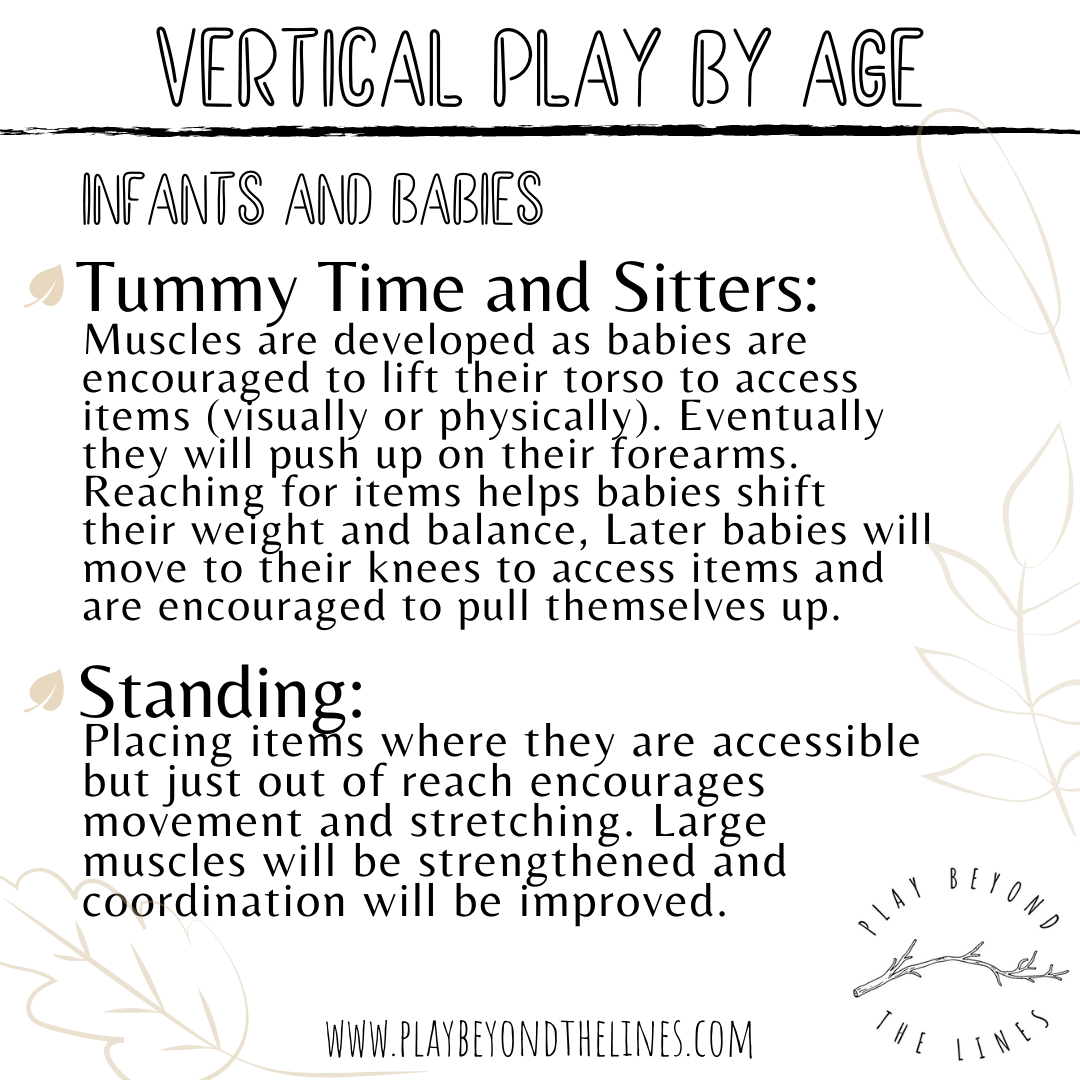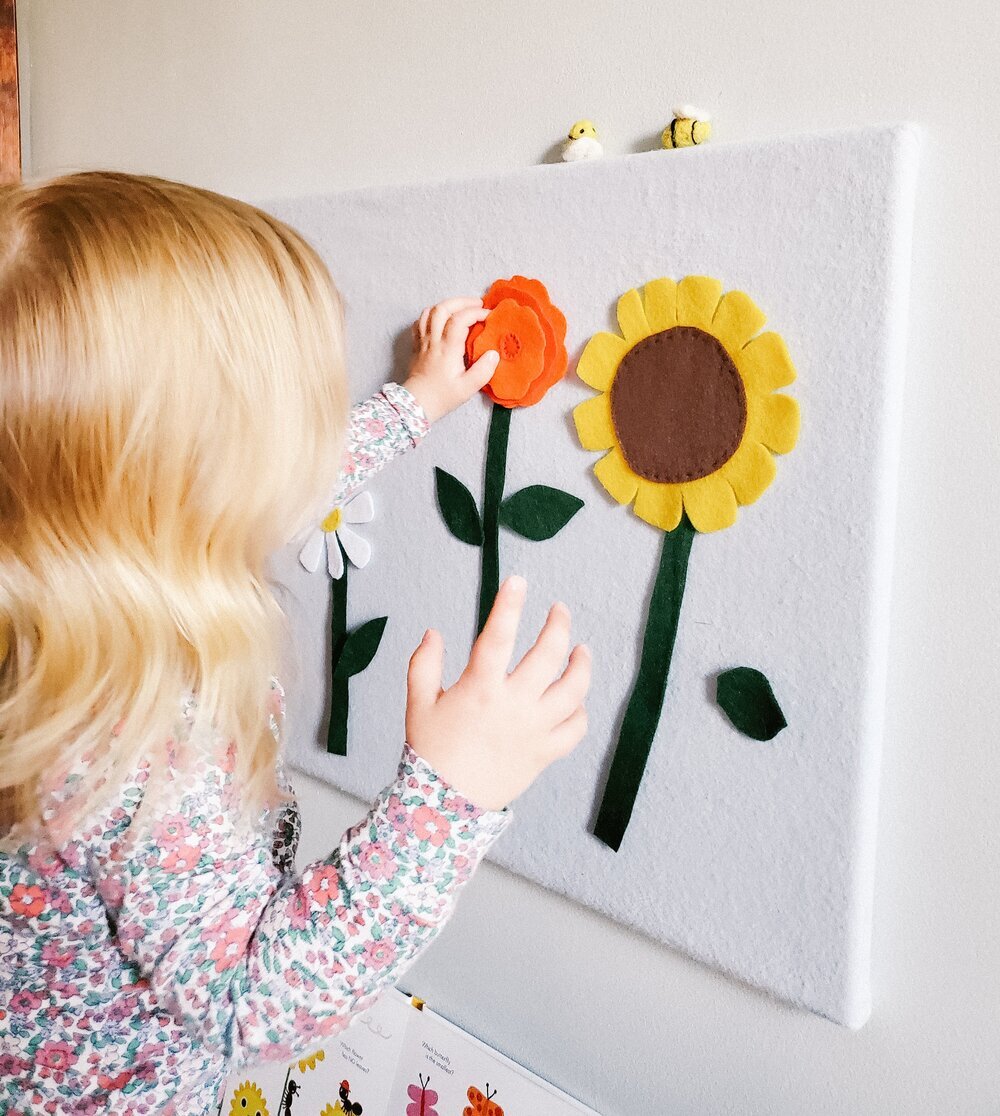Vertical Play
Simply moving play from a horizontal surface to a vertical one can transform the activity as well as the gains. It adds a fun new element to the activity and often draws children in. While they are participating, they are strengthening their bodies and brains.
Here are some of the direct benefits of vertical play,
It builds and strengthens muscles
Improves coordination
Promotes crossing the midline (connecting both sides of the brain to complete tasks on opposing sides of the body)
Infants and Babies:
Begin in infancy, children need to build and strengthen muscles in the neck, arms, torso, and legs. Vertical play encourages babies to work on building these muscles by moving visuals and/or play upward during tummy time, straight ahead and upward when sitting and standing. Stretching, moving and pulling oneself up will strengthen those important muscles. Vertical play requires babies to improve coordination. They will learn to shift their weight and maintain balance. They will also learn to brace themselves when moving, shifting their gaze, and stretching.
Toddlers and Older Children:
Vertical play will continue building and strengthening muscles beyond the infant/baby stage. Reaching, stretching, and manipulating objects on a vertical plane will strengthen arms and shoulders. The neck will be elongated to look ahead and upward. In school and with typical floor or table play, children are often leaning forward with their heads down. Opportunities to move work and play straight ahead or upright will help improve posture and core strength. Vertical play at this age will continue to improve coordination and encourage crossing the midline. All of these benefits will impact children as they learn to read and write as well as with everyday activities such as self care.
Ideas for Using Vertical Play,
Windows:
Window Gel Clings: These can be found at most dollar or department stores and often come in fun festive themes.
Reusable Stickers: These are not the sticky kind (those will leave glue residue behind) but rather the cling stickers that can be moved around
Window Markers and Paint: There are brands that make specific window art supplies. I have also found that dry erase markers do well.
Cleaning: Using a spray bottle of water along with a towel or squeegee
Wall:
Tape items to the wall for children to “rescue”
Hang a clipboard to use as a makeshift easel
Display interactive artwork
Felt Boards or Magnetic Boards with pieces to move and manipulate
Dry Erase Boards or Chalkboards
Refrigerator:
Magnetic Sets: You can find themed sets of magnetic pieces such as farm animals or vehicles. Some brands make refrigerator electronics such as Leap Frog’s alphabet. There are also magnetic letters and words that can be manipulated to practice literacy skills
Magnetic Tiles: Build or create mosaics using colorful magnetic tiles on the side of the refrigerator.
Cleaning: Just as with windows, provide children with a spray bottle of water along with a towel and let them clean the refrigerator (move them along to the cabinet doors as well and it’s a win win for everyone)
Easel:
Easels are typically thought to be used when painting, which is a great use. Go beyond just the painting and add other artwork. Make collages, sketch and color on a vertical surface.
Move homework and creative writing projects upright by using an easel.
If you have intentionally used vertical play before, share what you did and if there were any benefits or struggles. If you have not done so intentionally, which of these tips do you find helpful? How will you incorporate vertical play? We would love to hear from you, leave a comment to let us know or tag us on Instagram, @playbeyondthelines!






